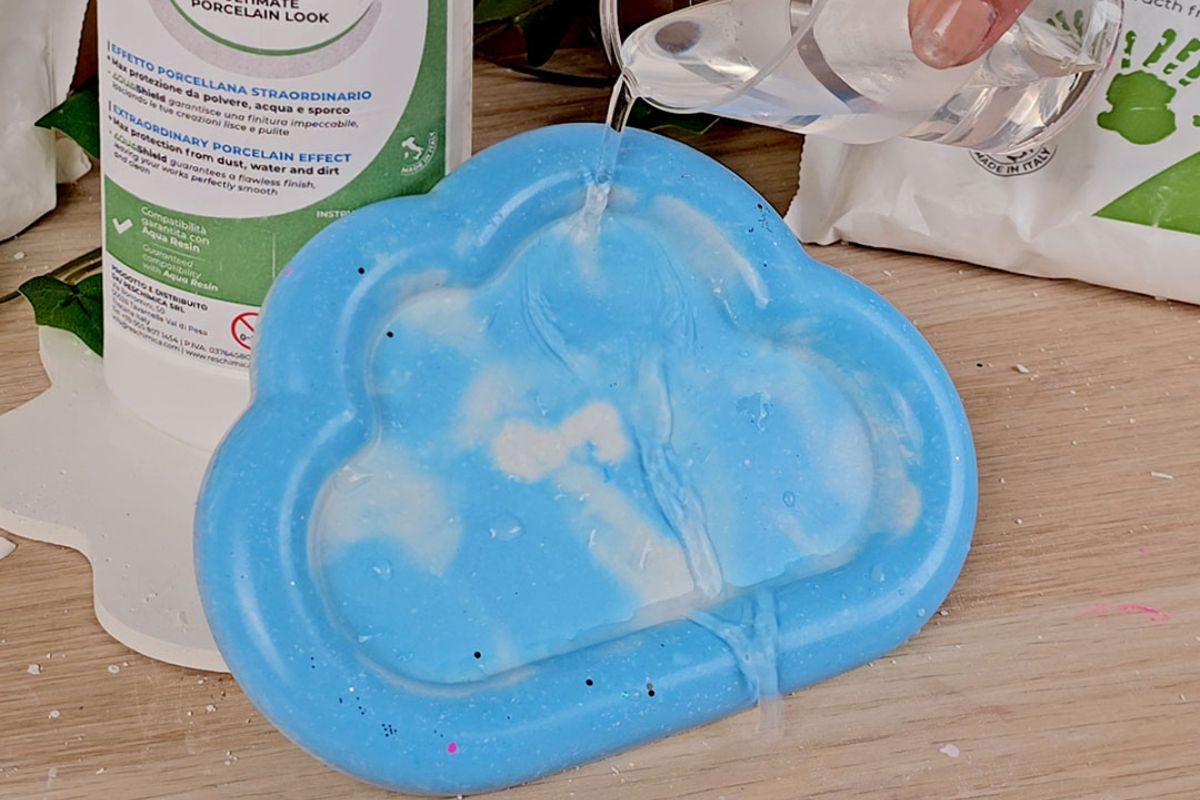

How to Waterproof Plaster: A Guide to Using Aqua Shield
Introduction
“To protect means to give strength to what we love.”
Plaster is a fascinating material: versatile, easy to work with, and ideal for creating countless artistic creations. But it has a weakness: it's porous and water-resistant. This means that a plaster object, if left untreated, can absorb moisture, stain, and deteriorate over time. What if I told you there was a way to transform plaster into a waterproof and ultra-durable material, without sacrificing its beauty? The answer is Aqua Shield , our special additive that makes every project long-lasting and ready to withstand the challenges of everyday life.
In this guide, we'll explain what Aqua Shield is, why it's essential for anyone working with plaster and mineral resin, and, most importantly, how to use it correctly, following the perfect proportions to obtain waterproof, shiny, and resistant objects.
Why is protecting casts essential?
While plaster is beloved for its natural elegance and velvety surfaces, it is extremely porous. This makes it perfect for absorbing paints and decorative finishes, but it also exposes it to the risk of absorbing water and moisture. A single drop can create difficult-to-remove stains, or an overly humid environment can weaken its structure. Protecting it prolongs its life and makes every creation more functional, durable, and safe.
What is Aqua Shield and what makes it special?
Unlike conventional surface-applied protectors, Aqua Shield is an additive that works from within , blending into the material itself. It's not brushed on or sprayed on: it integrates directly into the plaster, mineral resin, or acrylic resin mixture, partially replacing the water. This way, the protection isn't just superficial, it's structural: the material becomes deeply waterproof, more compact, and resistant to impact and time. The result? More robust, refined, and elegantly finished objects.
How does Aqua Shield work?
The principle is simple: Aqua Shield penetrates the plaster structure and seals its micropores, reducing water absorption and increasing mechanical strength. It also provides a more compact finish and, if desired, a slightly glossy sheen. This makes it ideal not only for interior decorations, but also for objects subject to contact with moisture, such as vases, candle holders, or bathroom furnishings.
How to Make the Perfect Blend: A Step-by-Step Guide
Now let's get to the heart of the matter: how to properly use Aqua Shield to waterproof plaster or Aqua Resin? Here's a simple and effective procedure that guarantees professional results.
Step 1: Prepare the ingredients and tools
You will need:
-
Aqua Shield
-
Aqua Resin (or gesso/acrylic resin)
-
A scale for precise dosing
-
A mixing container
-
A whisk or, better yet, our electric mixer
Step 2: Respect the correct proportions
To get the ideal mix, follow this formula:
-
Pour 50g of Aqua Shield (equal to 50%) into a container
-
Gradually add 100g of Aqua Resin (or acrylic resin/plaster) sifting it slowly while mixing
-
If you use natural chalk, the proportion changes slightly: add 60% of the weight , so 60 g of chalk for every 50 g of Aqua Shield
Step 3: Mix evenly
While adding the powder, stir constantly with a whisk or electric mixer to avoid lumps and achieve a smooth, creamy consistency. Proper mixing is essential to ensure even distribution of Aqua Shield throughout the mixture.
Step 4: Casting and hardening
Once the mixture is ready, you can pour it into the mold or shape it as desired. The working time is similar to traditional clay, but remember that Aqua Shield helps make the material more compact, so work quickly. After pouring, let the object harden for at least an hour . At this point, your object will already be deeply waterproofed.
Step 5: Finishing and customization
Once cured, you can proceed with finishing. Sand any imperfections with fine sandpaper, paint with acrylic paints, or apply embellishments. Adding Aqua Shield doesn't limit customization; on the contrary, it provides a more solid and uniform base for any type of finish.
Immediate benefits of using Aqua Shield
-
Structural waterproofing: no more fear of water stains or damp environments
-
Increased resistance to impacts and handling
-
More compact and professional finish
-
No need to apply additional surface protectors
-
Compatibility with pigments and decorative additives
Extra tips for perfect results
-
Always sift the powder to avoid lumps in the mixture
-
Mix vigorously, but without incorporating too much air (this will avoid bubbles)
-
Prepare only the amount you can work with in a few minutes: Aqua Shield sets slightly faster than plain water.
-
If you want marbled or colored effects, add pigments directly into the mixture
Why choose Aqua Shield over traditional methods?
Many people attempt to waterproof plaster with paints or protective sprays, but these are superficial solutions that can flake, yellow, or alter the original color over time. Aqua Shield, on the other hand, integrates into the heart of the material, protecting it from within and preserving its natural elegance. It doesn't add thickness, doesn't create peeling films, and doesn't alter the design: the result is invisible yet effective.
Conclusion
A handmade object is more than just a decoration: it's the fruit of your creativity and time. Protecting it means respecting your work and making it last forever. With Aqua Shield, you not only make your creations waterproof and durable, but you also give them a professional quality without the effort. Now that you know the correct method and ideal proportions, you're ready to experiment and transform every project into a masterpiece designed to last.